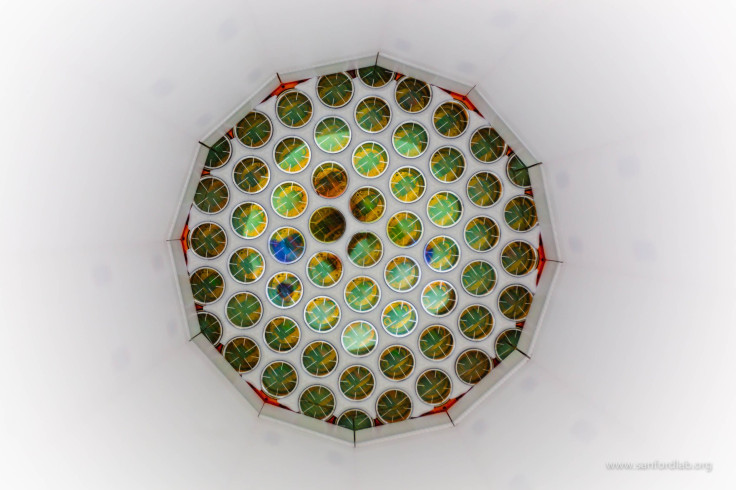Dark Matter Search Draws A Blank As World’s Most Sensitive Detector Fails To Find WIMPs

The hunt for the ever so elusive dark matter has drawn up another blank. Researchers associated with the Large Underground Xenon (LUX) dark matter experiment — the most sensitive dark matter detector in the world — reported Thursday that they found no traces of dark matter particles in their analysis of data collected in the detector’s final 20-month run between October 2014 and May 2016.
“With this final result from the 2014 to 2016 search, the scientists of the LUX Collaboration have pushed the sensitivity of the instrument to a final performance level that is four times better than the original project goals,” Rick Gaitskell, professor of physics at Brown University and co-spokesperson for the LUX experiment, said in a statement. “It would have been marvelous if the improved sensitivity had also delivered a clear dark matter signal. However, what we have observed is consistent with background alone.”
Here is the direct link to the full set of slides for the new result: https://t.co/AK90JeI25F pic.twitter.com/rcTcLSnft1
— LUX Dark Matter (@luxdarkmatter) July 21, 2016
Dark matter accounts for about 27 percent of the mass and energy in the observable universe, and 85 percent of all mass. Currently, the hypothetical Weakly Interacting Massive Particles, which are believed to interact with normal matter through gravity and the weak nuclear force, are the leading candidates to explain the composition of dark matter, but what class of particles these WIMPs belong to is not yet known.
LUX, which is located one mile below the Sanford Underground Research Facility in South Dakota, had been looking for these particles — and other potential dark matter candidates — since 2012. If the WIMP idea is correct, billions of these particles should be passing through the Earth every second. Scientists at LUX hoped that every now and then, one of these particles would collide with the atoms of nearly a third of a ton of cold liquid xenon suspended in a 72,000 gallon tank of purified water, producing a telltale flash of light.
This, however, did not happen.
“We gave dark matter every opportunity to show up in our experiment, but it chose not to,” Gaitskell told Symmetry magazine.
So what’s the next step in the hunt for dark matter?
According to the LUX researchers, although their experiment eliminates a large swath of mass ranges where the fabled WIMPs might exist, it does not entirely rule out the existence of these exotic particles. Particle physicists can now pin their hopes on the massive detectors at the Large Hadron Collider at the European Organization for Nuclear Research — the world’s most powerful particle accelerator that is currently smashing protons at record energies — and next generation experiments such as the LUX-ZEPLIN (LZ) experiment, which is slated to replace LUX at the Sanford Underground Research Facility.
“The innovations of the LUX experiment form the foundation for the LZ experiment,” Harry Nelson from the University of California, Santa Barbara, and spokesperson for LZ, said in the statement. “We expect LZ to achieve 70 times the sensitivity of LUX. The LZ program continues to pass its milestones, aided by the terrific support of the Sanford Lab, the Department of Energy and its many collaborating institutions and scientists. LZ should be online in 2020.”
© Copyright IBTimes 2024. All rights reserved.












